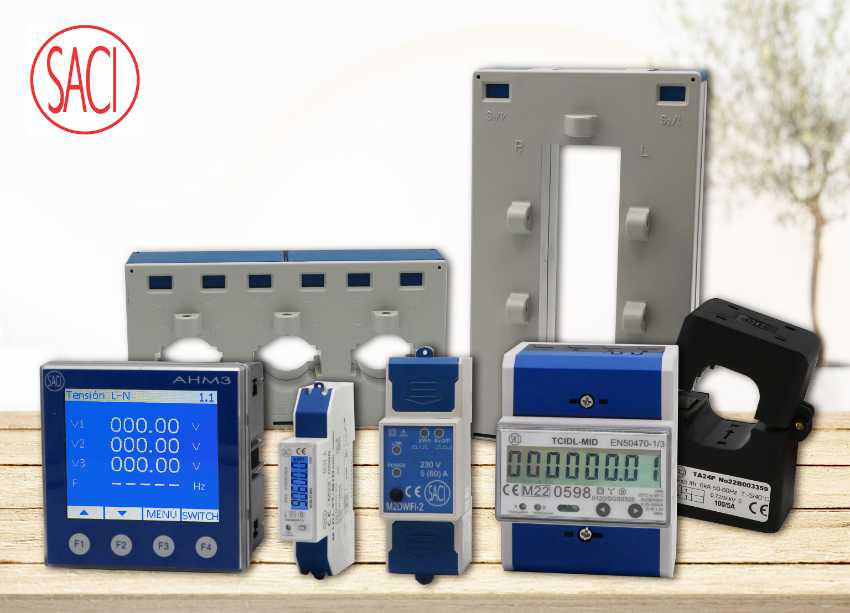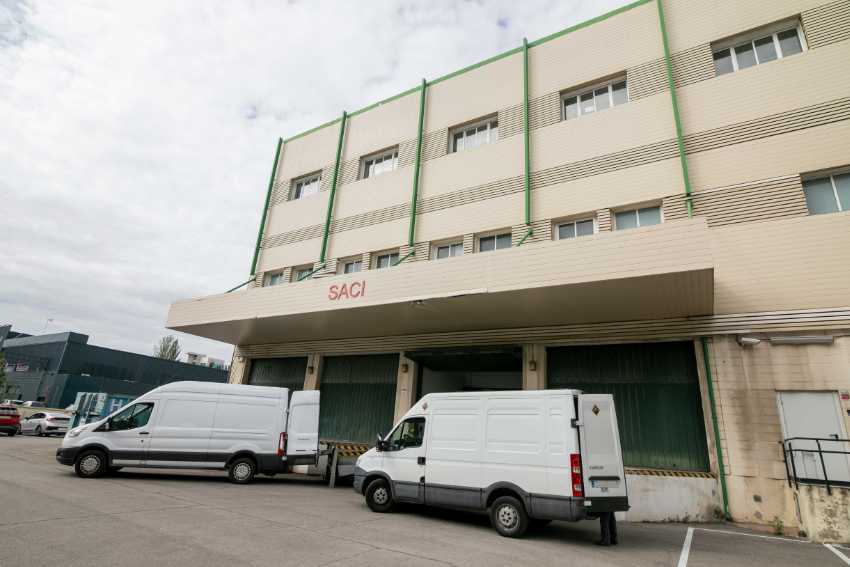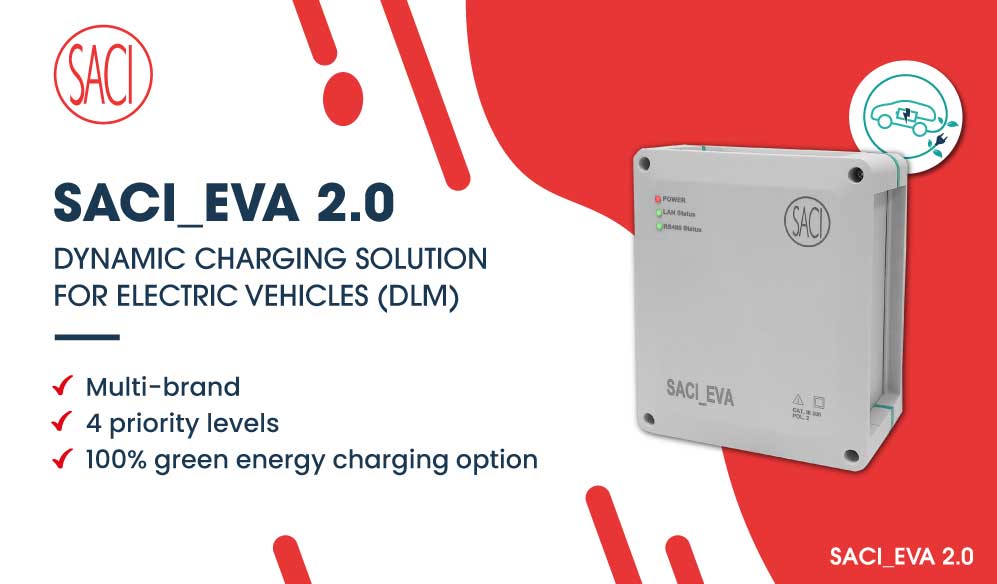SACI (Sociedad Anónima de Construcciones Industriales) is one of the leading European companies focused on the design, manufacture and commercialization of equipment oriented to Electrical Energy Efficiency and Control.
Interview with Juan Manuel Cumplido, Sales Manager at SACI.
A brief description of the company and its activities.
Juan Manuel Cumplido: SACI is a Spanish manufacturer with over 80 years of experience, specialized in the measurement and control of electrical installations and networks. Our presence extends to more than 50 countries, where we have evolved from measuring with analogue instruments, with needles marking parameters on printed scales, to being at the forefront of the current electrical revolution. We have our own R&D team that develops customized technological and digital solutions, positioning us at the top of innovation in the electrical sector.
What are the main areas of activity of the company?
J.M.C: SACI is active in a number of areas thanks to its extensive experience and constant development of new businesses. Our main focus is on working with electricity companies, both nationally and internationally, where we provide advanced metering and digitalization solutions for the electricity grid.
The industrial and tertiary sectors are also an important part of our business. SACI’s technical and industrial equipment is specifically designed to meet the needs of these sectors. In addition, our involvement in renewable energy is growing significantly. The increasing electrification of networks requires more precise control and management, and our solutions for electric vehicles and photovoltaics are essential in this context.
Finally, although to a lesser extent, we are also present in the naval and railway sectors, supplying control equipment for their control panels. In all these sectors, SACI is committed to providing advanced technology and efficient solutions for a more connected and sustainable world.

What’s the news about new products/services?
J.M.C: We are currently deeply involved in developing sustainable solutions that promote better habits around the world. SACI is positioned as a major player in technological innovation, as electricity is becoming increasingly important in this process. It is essential to develop a stable and advanced electrical grid that can respond to current needs, such as the bidirectional nature of energy in residential installations that consume and generate energy, or the increase in electric vehicles that require ultra-fast charging stations, requiring a robust electrical infrastructure.
In response to these needs, we have developed specialized equipment that enhances and solves these challenges. In the area of power grids, we offer customized solutions for the digitalization and control of electrical substations. These enable network faults, illegal connections, power losses and other problems to be detected from a control centre, improving troubleshooting and responsiveness and reducing response times.
On the other hand, we have recently launched SACI_EVA 2.0, a solution for dynamic charging of electric vehicles in public car parks and other facilities with a large number of chargers. This solution is compatible with any charger on the market and can manage up to 100 chargers in a single installation. It offers four charging priority levels and can use surplus photovoltaic energy to charge vehicles.
Our state-of-the-art technological solutions are environmentally friendly and designed to improve the efficiency of installations.

What are the ranges of products/services?
J.M.C: Our product range reflects our long history. Our portfolio includes network analyzers, sophisticated instruments that provide comprehensive measurement of all parameters of an electrical network. We offer everything from simple devices with only parameter measurement to more complex devices with different types of communication, integrated memory and compact single DIN module designs.
Another key range is energy meters, available in single-phase and three-phase versions with MID certification, guaranteeing accurate measurements and legal value in the European Union.
Instrument transformers are a fundamental part of our business, as we are able to manufacture transformers specifically to meet each customer’s requirements. Our portfolio includes resin and plastic transformers as well as Rogowski coils, providing a complete set of solutions.
We also offer transducers, digital and analogue instrumentation for measuring parameters widely used in various industrial sectors.
All SACI equipment complies with international certifications and standards and is backed by quality standards that guarantee the reliability of our products.
What is the state of the market where you are currently active?
J.M.C: Our extensive commercial team allows us to develop our business globally. Currently, 50% of our business is concentrated in Spain, with the other 50% spread throughout the rest of the world. We have important clients in countries such as Austria, Uruguay, Saudi Arabia and Thailand, among others.
What can you tell us about market trends?
J.M.C: The electricity sector is clearly moving towards decarbonization and energy efficiency. At both European and international level, significant efforts are being made to drive the energy transition by strengthening renewable energy infrastructures. These efforts are aimed at reducing carbon emissions and improving the energy efficiency of installations. The market currently rests on 4 pillars.
First, advanced monitoring solutions provide intelligent, real-time responses to the challenges of integrating new sources of electricity. Reducing fault resolution times is critical in an environment where real-time data collection and analysis enables better energy management.
The second is the electrification of transport. The increase in electric vehicles, both private and public, has a significant impact on overall energy demand.
Thirdly, the generation of energy through sustainable methods, such as photovoltaic and wind power, is crucial to achieving the government’s CO2 emission reduction targets.
Finally, and related to the previous two points, the development of energy storage systems is a priority for the coming years, with significant investment in technologies such as lithium-ion batteries and emerging solid-state batteries, which will help to improve grid quality and reduce peak demand.

What are the most innovative products/services marketed?
J.M.C: As part of our commitment to sustainability and electric mobility, we have launched the SACI_EVA 2.0 system, an advanced solution for charging electric vehicles. This innovative, intelligent, multi-brand balancing system allows the integration and management of charging points from different manufacturers in a single installation, such as public car parks or electric charging stations. SACI_EVA 2.0 has four charging priority levels and can use surplus photovoltaic energy generated on site to charge vehicles, optimizing the use of renewable resources.
In the area of advanced monitoring, we are developing digitization solutions for electrical substations, designed to meet each customer’s specifications and the available space in the electrical panel. These solutions include a data concentrator that captures line information using a network analyzer and a low-voltage supervisor that monitors the network in real time. The aim of this system is to improve the energy balance of the line, balance the phases, control the power quality and detect faults efficiently.
What estimations do you have for 2024?
J.M.C: The year 2024 has started with a slight slowdown compared to the beginning of the previous year, due to some political instability and cyclical factors. However, many projects currently awaiting decisions are expected to be activated in the last quarter of the year and in early 2025.
Progress in new technologies and solutions for modernization and digitalization continues to grow. Awareness of the importance of a sustainable and energy responsible society is increasing, which bodes well for a positive trend towards the end of 2024 and 2025. The response to our new solutions has been very positive, and both governments and private companies are showing great interest in driving these projects forward. We firmly believe that the near future will bring significant opportunities for the development and implementation of our innovations.

